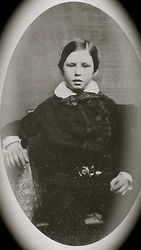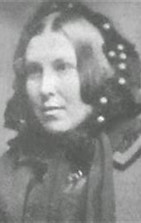Bram Stoker
Early YeARS

Abraham "Bram" Stoker (1847-1912) was born in Dublin, Ireland. He suffered from an unknown illness that left him bedridden and unable to walk until he was 7 years old. While it is unclear what the illness was, there are accounts of several sessions of bloodletting, a common medical practice of the time. During this time Bram's mother would often entertain her son with "real-life" stories. She had grown up in northwestern Ireland during a devastating cholera epidemic, and the stories she shared with young Bram weren’t exactly comforting bedtime tales.
Charlotte’s memories were raw and terrifying: mass graves, people mistakenly buried alive, and the chaos of a community overwhelmed by disease. One of her stories told of a man so deeply drugged with opium that he was nearly buried—until a blow meant to break his legs for the coffin actually woke him up. Another involved a neighbor whose wife was declared dead at the hospital. When he went to pay his respects, he found her dumped in a communal grave—still alive, clawing her way out.

Education / Transformation
Bram Stoker entered Trinity College Dublin in 1864. He studied mathematics and graduated with honors in 1870. During his time at Trinity, he became treasurer of the University Philosophical Society, where he developed his public speaking and writing skills.
Bram also became a college rugby player, and ran on the school's track and field team!
He began writing drama reviews for the Dublin Evening Mail, which introduced him to the theater world and eventually led to his long-term partnership with actor Sir Henry Irving. He also would make friends with other literary greats - Oscar Wilde, and Sir Arthur Conan Doyle.

Author/ Theater Manger/ Law Clerk

After graduating from Trinity College Dublin, Bram Stoker worked as a law clerk at Dublin Castle while continuing to write theater reviews on the side. In 1878, he married Florence Balcombe and moved to London to manage the Lyceum Theatre under famed actor Sir Henry Irving—a role he held for nearly 30 years. Bram wrote 10 novels and 2 novellas before his death on April 20, 1912 at age 64.
Bram Stoker’s Novels: A Quick Reference Guide
-
The Primrose Path (1875): Social drama; explores alcoholism and moral downfall
-
The Snake’s Pass (1890): Irish folklore meets romantic adventure
-
The Watter’s Mou’ (1895): Smuggling, romance, and coastal mystery
-
The Shoulder of Shasta (1895): Light romance set in California
-
Dracula (1897): Gothic horror; vampires, sexuality, science vs superstition
-
Miss Betty (1898): Romantic fiction with social commentary
-
The Mystery of the Sea (1902): Espionage, second sight, and supernatural prophecy
-
The Jewel of Seven Stars (1903): Egyptian curses, resurrection, and female power
-
The Man (The Gates of Life) (1905): Romance and philosophical musings on gender and destiny
-
Lady Athlyne (1908): Romantic suspense with Gothic undertones
-
The Lady of the Shroud (1909): Balkan politics, spiritualism, and mysterious women
-
The Lair of the White Worm (1911): Ancient evil, grotesque horror, and surreal imagery